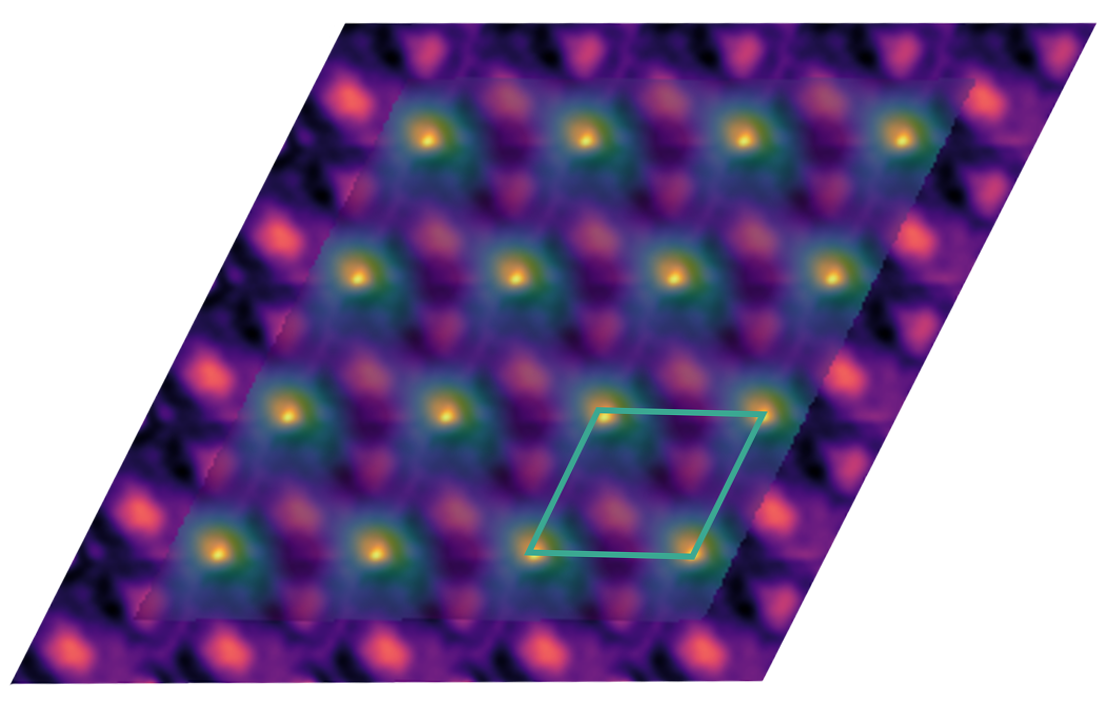
Microscopy Images Lead to New Ways to Control Excitons for Quantum Computing: Excitons are drawing attention as possible quantum bits (qubits) in tomorrow’s quantum computers and are central to optoelectronics and energy-harvesting processes. However, these charge-neutral quasiparticles, which exist in semiconductors and other materials, are notoriously difficult to confine and manipulate. Now, for the first time, researchers have created and directly observed highly localized excitons confined in simple stacks of atomically thin materials. The work confirms theoretical predictions and opens new avenues for controlling excitons with custom-built materials.
“The idea that you can localize excitons on specific lattice sites by simply stacking these 2D materials is exciting because it has a variety of applications, from designer optoelectronic devices to materials for quantum information science,” said Archana Raja, co-lead of the project and a staff scientist at Lawrence Berkeley National Laboratory’s (Berkeley Lab) Molecular Foundry, whose group led the device fabrication and optical spectroscopy characterization.
The team fabricated devices by stacking layers of tungsten disulfide (WS2) and tungsten diselenide (WSe2). A small mismatch in the spacing of atoms in the two materials gave rise to a moiré superlattice, a larger periodic pattern that arises from the overlap of two smaller patterns with similar but not identical spacing of elements. Using state-of-the-art electron microscopy tools, the researchers collected structural and spectroscopic data on the devices, combining information from hundreds of measurements to determine the probable locations of excitons.
“We used basically all the most advanced capabilities on our most advanced microscope to do this experiment.”
– Peter Ercius
“We used basically all the most advanced capabilities on our most advanced microscope to do this experiment,” said Peter Ercius, who led the imaging work at the Molecular Foundry’s National Center for Electron Microscopy. “We were pushing the boundaries of everything we can do, from making the sample to analyzing the sample to doing the theory.”
Theoretical calculations, led by Steven Louie, a faculty senior scientist at Berkeley Lab and distinguished professor of physics at UC Berkeley, revealed that large atomic reconstructions take place in the stacked materials, which modulate the electronic structure to form a periodic array of “traps” where excitons become localized. Discovery of this direct relationship between the structural changes and the localization of excitons overturns prior understanding of these systems and establishes a new approach to designing optoelectronic materials.
The team’s findings are described in a paper published in the journal Science with postdoctoral fellows Sandhya Susarla (now a professor at Arizona State University) and Mit H. Naik as co-lead authors. Next the team will explore approaches to tuning the moiré lattice on demand and making the phenomenon more robust to material disorder.
The Molecular Foundry is a DOE Office of Science user facility at Berkeley Lab.
The research was supported by the Department of Energy’s Office of Science.
# # #
Founded in 1931 on the belief that the biggest scientific challenges are best addressed by teams, Lawrence Berkeley National Laboratory and its scientists have been recognized with 16 Nobel Prizes. Today, Berkeley Lab researchers develop sustainable energy and environmental solutions, create useful new materials, advance the frontiers of computing, and probe the mysteries of life, matter, and the universe. Scientists from around the world rely on the Lab’s facilities for their own discovery science. Berkeley Lab is a multiprogram national laboratory, managed by the University of California for the U.S. Department of Energy’s Office of Science.
DOE’s Office of Science is the single largest supporter of basic research in the physical sciences in the United States, and is working to address some of the most pressing challenges of our time. For more information, please visit energy.gov/science.
Microscopy Images Lead to New Ways to Control Excitons for Quantum Computing: Original Article
Efficient and stable emission of warm white light from lead-free halide double perovskites










